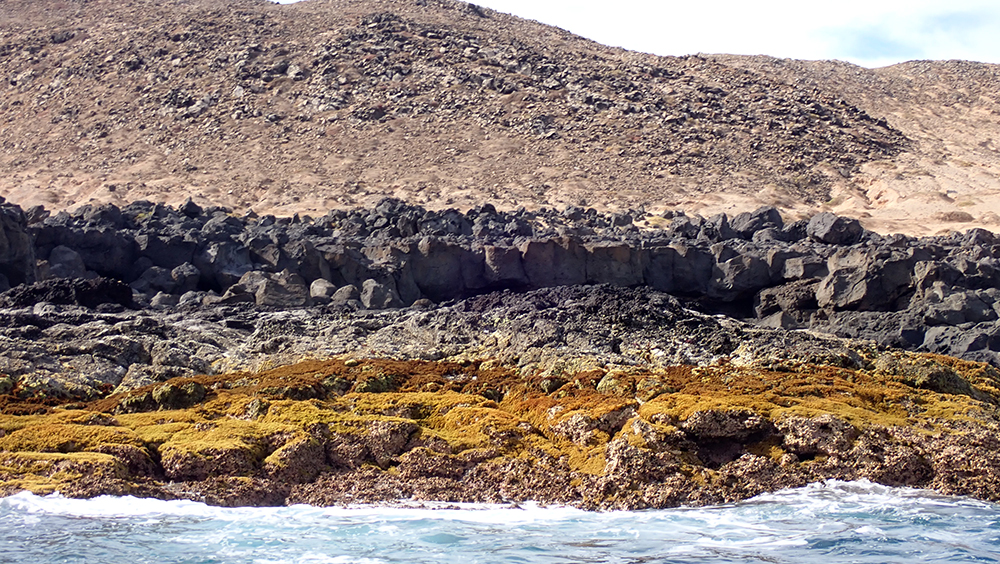The study analyzes the algal ecosystems of the Gran Canaria intertidal to determine the effects of habitat fragmentation on the diversity of the different species that inhabit this rich ecosystem
The research, pioneer in marine environments, uses the Gran Canarian coasts as a pilot experiment to be exported to other marine areas of the world, such as the North American coasts
The State University of New York, at Syracuse, recently offered the seminar ‘Opening Pandora’s Box: Fragmentation, Edges, and Mosaic Landscapes’, imparted by Researcher Rodrigo Riera Elena, from the Biodiversity and Conservation group (BIOCON) of the University Institute for research in Sustainable Aquaculture and Marine Ecosystems (ECOAQUA).
The event, which took place on November 9 under the title ‘Speakers Series: Adaptive peaks’ hosted several specialized seminars in Environmental Sciences, organized by the Department of Environmental Biology of Environmental Sciences and Forestry of the School of the State University of New York and aimed at undergraduate, Master’s and PhD students and professors of this scientific specialty.
 Photo of Rodrigo Riera's lecture at the State University of New York
Photo of Rodrigo Riera's lecture at the State University of New York
During the lecture, the BIOCON researcher, explained the development and preliminary conclusions that are being reached through the research of the Canary epifauna.
This is a pilot study, pioneer in the research of marine epifaunal organisms, which aims to catalog and define the fragmentation of the coastal habitat through the analysis of the different small species (between half a millimeter and two centimeters in length) that live in the seaweeds of the Gran Canarian coasts.
As explained by Rodrigo Riera, PhD in marine ecology, responsible for this line of research, his team is compiling and analyzing the different epifauna organisms found in different habitats in the rocky areas of the island, as well as in communities present in the intertidal, distinguishing areas of red algae, brown algae, or spaces with a higher or lower percentage of algae.
 Photo of the Gran Canaria intertidal area
Photo of the Gran Canaria intertidal area
Its objective is to analyze both the number of species (small shrimp, mollusks, crabs or worms among others) and the number of specimens of each of them located in the different ecosystems, in order to determine how it affects habitat fragmentation and the edge effect (the transition in the same habitat between the different species of algae located in it).
The project, which is beginning to obtain its first preliminary results, would be one of the first studies of this type to be carried out in marine habitats, specifically in the Atlantic coastal intertidal. This is an investigation that aims to expand its analysis in other marine areas of the world, such as the North American coasts, as studies of this type are practically non-existent, beyond those carried out in terrestrial environments, rivers and lakes.
Rodrigo Riera has a PhD in Marine Ecology specialized in Zoology. He is currently a professor at the University of Las Palmas de Gran Canaria, while also being part of the BIOCON group of the ECOAQUA University Institute, focusing his investigations on the effects of human disturbances on the diversity and function of coastal communities, at small and large scale, with the objective of understanding the role of species diversity, their functional traits and interactions.
For more information, please, contact: Beatriz Díaz – beatriz@mandarinacomunicacion.es – 620410871


